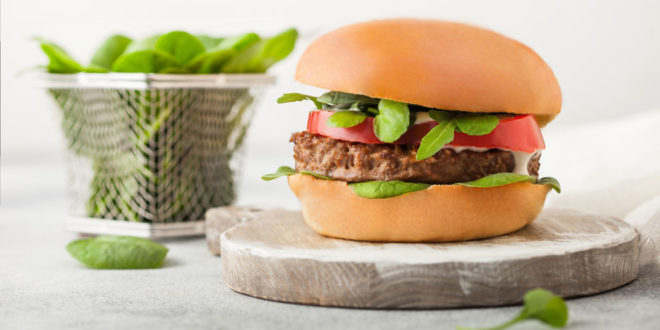Employees in more than 215 meat processing plants nationwide accounted for at least 17,000 COVID-19 cases by late May, according to the Food & Environment Reporting Network (FERN). Of those workers who contracted the disease, 70 died, as did four U.S. Department of Agriculture food inspectors.
By late May, the pandemic had shut down at least four meat processing plants and many more were crippled by reduced workforces. Without workers to process and package meat, shortages and higher prices have resulted. Grocery store meat supplies could be 30 percent lower and prices 20 percent higher by June, according to CoBank’s “Closed Meat Plants Today Mean Empty Meat Cases this Summer” report.
Even without shortages and higher prices, some consumers are avoiding meat due to concerns that sick workers could pass COVID-19 through the products they handle. Combine that worry with those looking for ways to strengthen their immune systems during the pandemic through better nutrition, and it’s clear that meat consumption may be lower for some time to come.
Traditionally, the focus of the American dinner plate is a large portion of red meat or poultry with little attention paid to fruits, vegetables, and legumes. Many home cooks may be so accustomed to building a meal around animal protein, they are stumped on what to do now. Fortunately, there are plenty of plant-based protein options that even the pickiest carnivore will love.
Plant-based Protein Options
The good news is that most of us don’t need huge amounts of protein. Just how much is needed varies from person to person depending on factors such as age, weight, and activity level. But protein deficiency is an uncommon occurrence in the U.S. and typically folks aren’t calculating how much protein they eat daily. (If interested in the numbers, there are calculators that can compute how much protein you need.)
Even better news is that there are lots of affordable protein-packed plants that can fill in for absentee meat. Consider one of these options to replace meat as the centerpiece of meal planning:
- Lentils (up to 9 g of Protein per ½ Cup) – can be used in soups, stews, salads, and as a meat substitute where ground beef otherwise is used
- Chickpeas (7 g of Protein per ½ Cup) – add to sandwiches and salads, mash up for hummus, roast for a snack
- Hemp Seeds (10 g of Protein per 3 Tbsp) – sprinkle on salads, stir into a smoothie, toss into yogurt or quick breads
- Tofu (8 g of Protein per 3 Ounces) – scramble, sauté, fry, bake are just a few ways to prepare this versatile food
- Nuts (5 to 6 g of Protein per ¼ Cup) – eat as nut butters, on salads, as a snack, even as a meat substitute
Beyond whole plant sources, there are dozens of plant products that mimic meat. Some best known (and loved) brands include Beyond Meat, Morningstar Farms, Quorn, Tofurky, and Sweet Earth. These plant-based protein sources are convenient and versatile. Beyond Meat, for example, not only has “burgers,” but also offers crumbles. The crumbles can be used for tacos, chili, or in pasta sauce.
Resources on Meat-free Meals
Still unsure of where to start? Try the internet! If interested in preparing meat-free meals, resources are plentiful with a quick Google search. Below are a few favorites.
Websites worth bookmarking include:
- Dr. McDougall’s Health and Medical Centre: http://www.drmcdougall.com/
- Colin Campbell Center for Nutrition Studies: http://nutritionstudies.org/
- Forks Over Knives Official Website: http://www.forksoverknives.com/
Check out these Instagram pages for inspiration:
- Shine with Plants (@shinewithplants)
- Taavi Moore (@healthienut)
- Lauren Kirchmaier (@flora_and_vino)
- Caroline Ginolfi (@plantbasedblonde)
And don’t forget Pinterest for thousands of recipes:
- https://www.pinterest.com/vegnews/vegan-food-galore/
- https://www.pinterest.com/veronicad2k/plant-based-diet-recipes/
With meat supplies dwindling and prices spiking, now is a great time to explore plant-based meal options. Meat-free meals can be delicious, nutritious, easily sourced, and economical. By embracing plant-based options, the answer to “Where’s the Beef?” won’t really matter.
Kim Freeman writes from Ohio.
© 2002 - 2025, AnswersForMe.org. All rights reserved. Click here for content usage information. Answers for Me Support & encouragement for every-day life
Answers for Me Support & encouragement for every-day life



